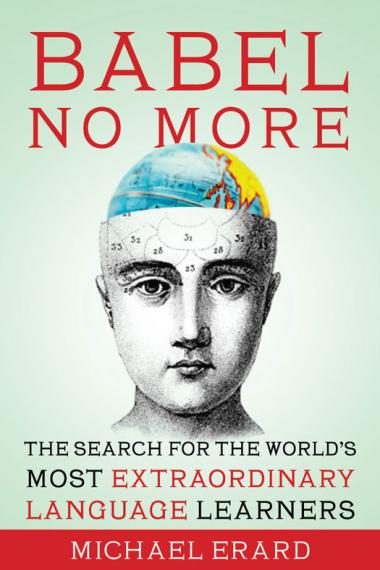
A Genius for Languages
BABEL NO MORE:
The Search for the World’s Most Extraordinary Language Learners.
By Michael Erard.
Free Press. 306 pp. $25.99

BABEL NO MORE:
The Search for the World’s Most Extraordinary Language Learners.
By Michael Erard.
Free Press. 306 pp. $25.99
A welter of tongues erupted from the assembled crowd, in speech so rapid that individual phrases could barely be made out. Pope Gregory XVI had gathered a crew of international students to test the skills of Giuseppe Mezzofanti, a 19th-century Italian cardinal who supposedly spoke as many as 60 languages, including Turkish, Hebrew, French, and Chinese. According to historical accounts, Mezzofanti switched swiftly between dozens of dialects to answer the students’ questions one by one, thereby passing the pope’s test. His performance qualifies him as one of history’s first recorded hyperpolyglots—defined as people who speak at least 11 languages.
In Babel No More, a study of so-called language superlearners, journalist Michael Erard argues that examining the cognitive gifts of people like Mezzofanti may help uncover “the upper limits of our ability to learn, remember, and speak languages.” Mezzofanti’s capacity to switch between languages, for instance, is evidence of an extremely well-developed executive function—the set of cognitive skills that help people organize and manage multiple tasks.
Erard writes that he “set out to write Babel No More along the lines of a book about, say, some fabled creature like the Loch Ness monster,” in which the author “returns from his wanderings enlightened, engaged. But not with the creature in a cage.” Then, on an online message board, he stumbled upon Alexander Arguelles. By working on languages for as many as 12 hours a day while teaching at a university in South Korea, Arguelles had built a repertoire of dozens of tongues, from Sanskrit to Old Norse. Erard soon encountered other hyperpolyglots, including a World Bank official with an arsenal of 19 languages, and a man in the Shetland Islands whose competence in 22 languages had won him the “Polyglot of Europe” contest in 1990, at age 68.
Eventually, Erard heard from nearly 400 polyglots who served as a sample for a Web survey he devised. It turned out that most of them didn’t maintain maximum fluency in all their languages all of the time. Rather, they let some lapse in order to pick up new ones, brushing up on their former proficiencies as needed. Most hyperpolyglots seem to max out at between five and seven “active” languages, roughly the same number as average language learners who are raised in extremely multilingual environments. (Globalization, Erard observes, has brought a proliferation of such environments, so that even monolinguals such as himself must increasingly learn to “live and act multilingually.”)
The fleeting nature of their fluency didn’t seem to bother the hyperpolyglots that Erard met, who had mostly given up “speaking like a native” as the standard for proficiency. Instead, they tended to fashion their own multilingual worlds. Besides, hyperpolyglots often make clever use of bits and pieces of a language to sound more fluent than they are. This talent allows them to complete complicated tasks with only a limited vocabulary—for instance, as a priest, Mezzofanti could quickly assimilate the standard phrases and responses needed to hear confession in a new language, even if he would be lost, say, discussing politics in it. Another case reported by Erard is that of an MIT linguistics professor who, according to his colleagues, was able to wander into an aboriginal village with a previously unknown language at 10 a.m. and begin conducting interviews for his field work by noon.